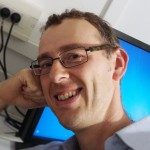About
This is a lattice-like structure that is unique to Euglena and Kinetoplastida protozoa (see picture above). It is tightly attached to the axoneme as only trypsin treatment can separate the two structures. It is composed of two main coiled-coil proteins termed PFR1 and PFR2 (formerly known as PFRC and PFRA in T. brucei and PAR3 and PAR2 in T. cruzi). Ablation of any of these two proteins leads to formation of a rudimentary PFR restricted to the proximal domain and to severe defects in flagellum beating (Bastin et al, 1998, 1999; Durand-Dubief et al, 2003). Cells are almost paralysed, suggesting that the PFR is contributing to cell motility. Although several hypotheses have been raised to explain this result, the actual way by which PFR contributes to cell motility remains a mystery. As PFR proteins are unique to the parasites and essential for parasite development in the bloodstream, they represent attractive drug targets.
An exhaustive proteomic study of the T. brucei flagellar skeleton containing the axoneme and the PFR has been published by the group of Keith Gull (Oxford) and has revealed the presence of at least 331 proteins and functional analysis implied several of them in flagellum beating (Broadhead et al, Nature 2006).
Flagellum construction
The flagellum is constructed by addition of axoneme and PFR proteins at the distal tip of the elongating structure, a bit like a tower is built by addition of new bricks at its top. This process involves intraflagellar transport (IFT), a dynamic process by which ‘trains’ made of protein complexes travel between the flagellar membrane and the axoneme doublets, from base to tip (anterograde) and then from tip to base (retrograde). Our group was the first one to demonstrate the importance of IFT for flagellum formation (Kohl et al. 2003). The data also demonstrated formally that the length of the flagellum controls the length of the cell body. More recently, we were the first ones to successfully visualise IFT in live trypanosomes (Absalon et al. 2008). This was quite challenging as trains can travel at speed of up to 7 µm per second! The current model proposes that tubulin and other flagellum components are transported by the IFT system, although direct evidence for such a transport are still missing.

